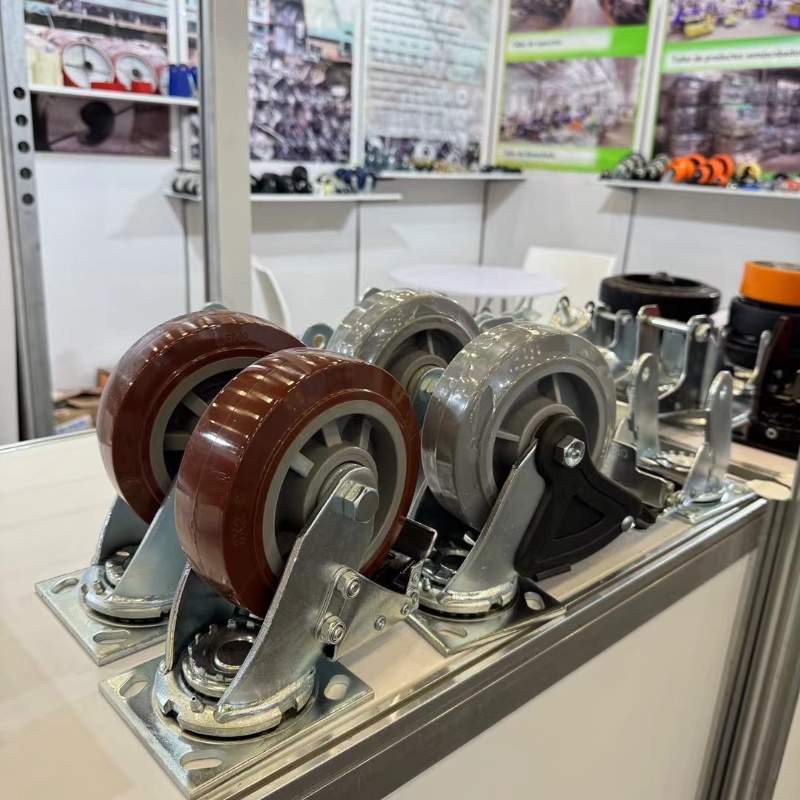La danza de la ingeniería: Especificaciones de equilibrio de las ruedas giratorias en el diseño de carros médicos
Jul 24 , 2025

El diseño de equipos médicos móviles eficaces, como carros de emergencia, dispensadores de medicamentos o estaciones de trabajo portátiles, depende de una interacción delicada de tres especificaciones críticas de las ruedas: rueda giratoria rígida diseño, altura de la rueda giratoria , y peso de la rueda giratoria Capacidad. Ignorar la sinergia entre estos factores puede comprometer la funcionalidad, la fatiga del usuario e incluso la seguridad del paciente.
La elección entre giratorio y rueda giratoria rígida La configuración es fundamental e influye directamente en la estabilidad y la maniobrabilidad. Los carros de emergencia, que transportan medicamentos críticos y a menudo transitan a toda prisa por los pasillos, se benefician enormemente de tener dos... rígido Ruedas. Estas ruedas fijas proporcionan una estabilidad direccional firme, evitando que el carro patine peligrosamente durante movimientos rápidos, especialmente al circular por pasillos rectos del hospital. Las dos ruedas giratorias del extremo opuesto permiten el giro necesario, pero el par rígido garantiza un seguimiento predecible bajo tensión, evitando colisiones o derrames accidentales.
Altura de la rueda giratoria Impacta profundamente tanto la estabilidad como la ergonomía. Una rueda más alta eleva la superficie de trabajo del carro, lo que podría mejorar la postura del profesional sanitario durante su uso. Sin embargo, al mismo tiempo eleva el centro de gravedad del carro. Para equipos que transportan artículos pesados con carga superior, como monitores o tanques de oxígeno, una carga excesiva... altura de la rueda giratoria Aumenta significativamente el riesgo de vuelco, especialmente si se golpea o se coloca sobre un suelo irregular. Por el contrario, las ruedas muy bajas maximizan la estabilidad, pero pueden dificultar el manejo del carrito sobre umbrales o cables, obligando a los usuarios a agacharse de forma incómoda. Los diseñadores deben encontrar la altura óptima que equilibre la accesibilidad, la altura de trabajo ergonómica y un centro de gravedad lo suficientemente bajo para el perfil de carga específico.
Quizás la especificación más no negociable es la peso de la rueda giratoria Capacidad. Los carros médicos experimentan diversas cargas: peso base del equipo, fluctuaciones en los suministros y, crucialmente, fuerzas dinámicas. Un carro de emergencia puede ser relativamente ligero cuando está parado, pero experimenta fuerzas descendentes y laterales significativas cuando se empuja rápidamente o se detiene bruscamente. Cálculo de la peso de la rueda giratoria El requisito exige considerar:
Peso estático: El carro + carga más pesada prevista.
Fuerzas dinámicas: Impacto por movimiento, frenado y superficies irregulares (¡margen de seguridad!).
Distribución desigual: La carga no siempre está perfectamente centrada.
Número de ruedas:
Peso total dividido por las ruedas, pero tenga en cuenta que no todas soportan la misma carga constantemente.
Subestimar la capacidad conlleva el riesgo de una falla catastrófica de las ruedas (horquillas dobladas, ruedas destrozadas o pivotes agarrotados), posiblemente durante una emergencia crítica. El estricto cumplimiento de la capacidad nominal, incluyendo amplios márgenes de seguridad, es fundamental para la fiabilidad y la seguridad.
En definitiva, el éxito del diseño de un carro médico no se trata de maximizar las especificaciones de cada rueda de forma aislada. Es una cuestión de ingeniería: seleccionar la rueda adecuada. rueda giratoria rígida Colocación para un movimiento controlado, optimizando altura de la rueda giratoria para la estabilidad y comodidad del usuario, y asegurando rigurosamente la peso de la rueda giratoria La capacidad supera las exigencias más exigentes del mundo real. Este enfoque holístico garantiza que el equipo se mueva de forma fiable, segura y eficiente, apoyando a los profesionales sanitarios cuando más lo necesitan.